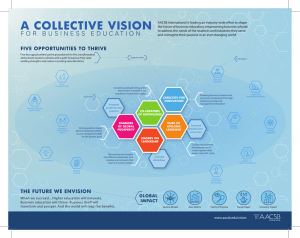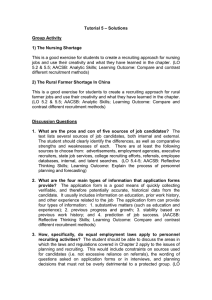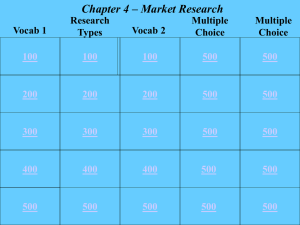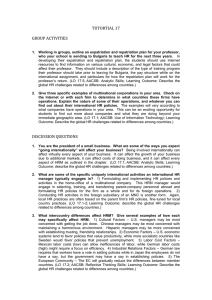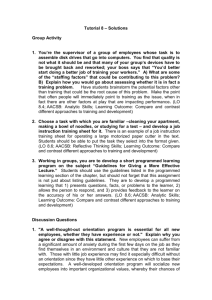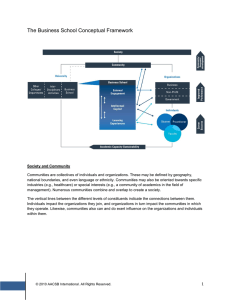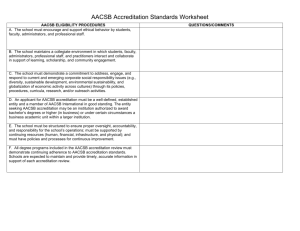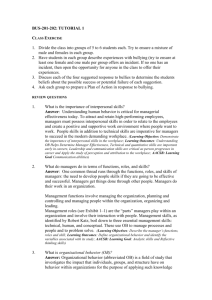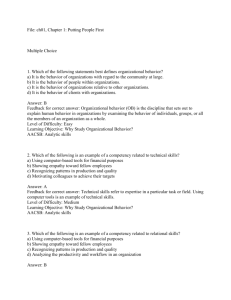College of Business Spring 2013 Faculty/Staff Meeting
advertisement
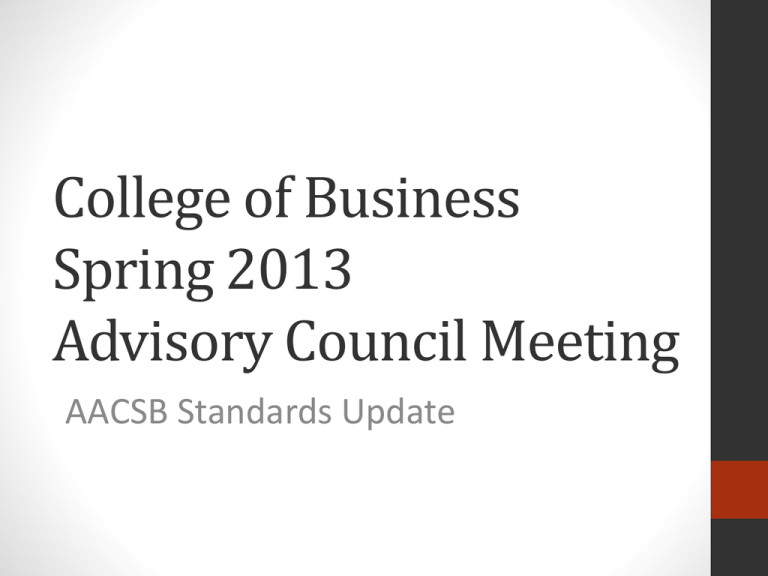
College of Business Spring 2013 Advisory Council Meeting AACSB Standards Update AACSB Standards Update • Blue Ribbon Committee to review the Standards was established in September of 2010 • New Accreditation Standards were approved at AACSB Conference on April 8, 2013 AACSB Standards Update • Highlighted Differences • New Standards – 15 total • Standards are divided into these categories: • • • • Strategic Management & Innovation Participants – Students, Faculty, Professional Staff Learning & Teaching Academic & Professional Engagement • 3 Major Themes of the New Standards • Innovation • Impact • Engagement AACSB Standards Update How major are these themes? Word Search for . . . Innovation, Innovate Old Standards Used 14 times (p. 22) New Standards Used 33 times (title page) Impact, Impacts, Impactful Engagement, Engages, Engage, Engaging Used 7 times (p. 10) Used 30 times (p. 3) Used 84 times (title page) Used 84 times (title page) AACSB Standards Update • What do these themes mean? • Innovation: the standards must • set demanding but realistic thresholds, • challenge us to innovate, and • inspire educators to pursue continuous improvement. • It is key to • recognize the importance of experimentation • place priority on strategic innovation • recognize that innovation involves the potential for success and the risk of failure AACSB Standards Update • What do these themes mean? • Impact: focuses on the outcomes of College inputs (human, financial, physical, etc.) • AACSB will continue to emphasize • Assurance of Learning – review teams expect to see evidence of curricula improvement • Production of intellectual contributions that make a positive impact on business theory, teaching, or practice. • Impact is concerned with what has been changed, accomplished, or improved AACSB Standards Update • What do these themes mean? • Engagement: Quality business education cannot be achieved when either academic or professional engagement is absent, or when they do not intersect in meaningful ways. This includes: • interaction and engagement among students, administrators, faculty, and practitioners • engagement of appropriate stakeholders in revising the mission, expected outcomes, supporting strategies, curriculum development, governance, etc. • actively engaging students in learning • engagement of faculty in sustaining intellectual capitol necessary to support high-quality outcomes consistent with our mission and strategies How Do The New Standards Impact Faculty Qualifications? Sustained Engagement Activities Academic Research/Scholarly Initial Academic Preparation & Prof’l Experience Professional Experience Substantial in Duration & Level of Responsibility Doctoral Degree Applied/Practice Scholarly Practitioners (SP) Instructional Practitioners (IP) Scholarly Academics (SA) Practice Academics (PA) Maintenance of One’s Academic Qualifications • Faculty members may undertake a variety of academic and/or professional engagement activities including (among others): • Publishing/production of scholarship outcomes (SA, SP) • Journal editorships (SA, SP) • Editorial board service (SA, SP) • Faculty internships (PA, IP) • Sustained professional work (IP) • Relevant, active service on Boards of Directors (PA,IP) Please note: this is a very small sample of what may qualify for maintenance of qualifications. Obviously, creating the ISU College of Business list will require thoughtful discussion among relevant stakeholders. In Summary . . . • Next Maintenance Visit is Fall 2016 • Maintenance report will be submitted Summer of 2016 • We will receive “consultation” based on our compliance with these new standards • Much work needs to get done between now and then on: • Defining measures of innovation, impact, and engagement • Reviewing & updating the strategic plan • Adjusting the faculty evaluation process • To name a few
